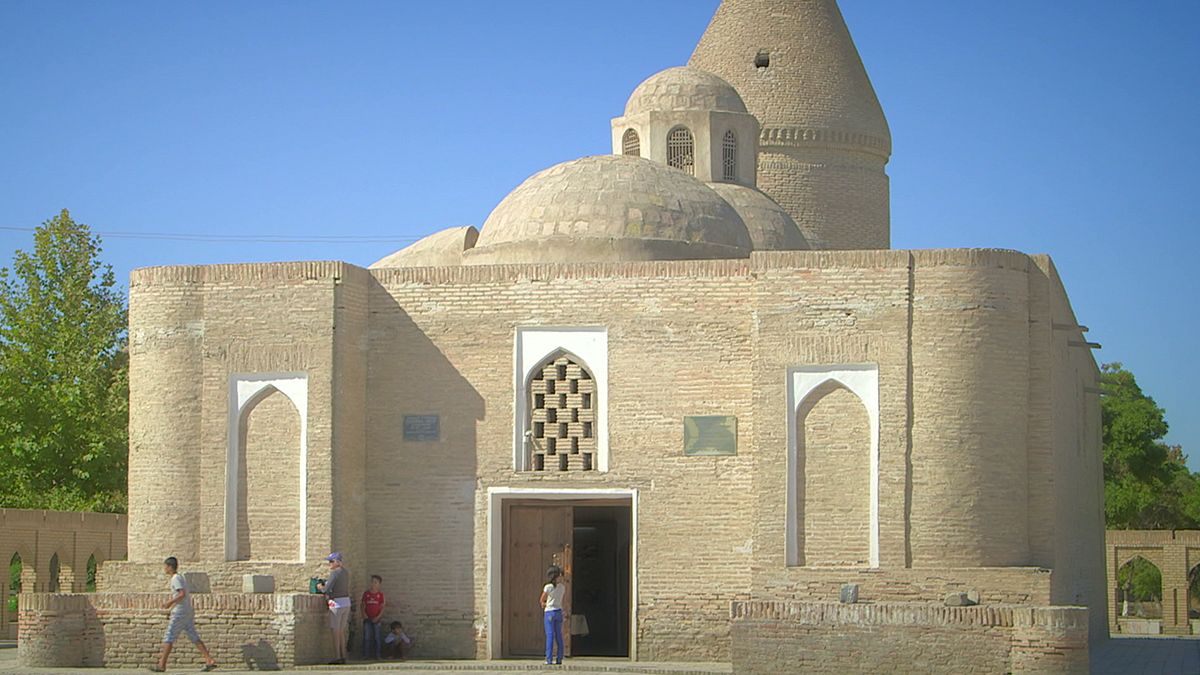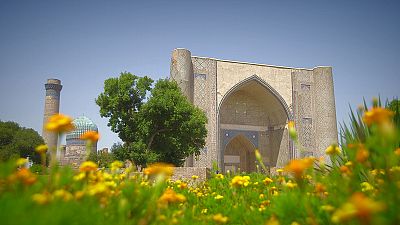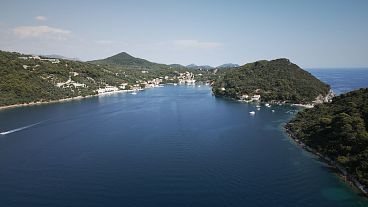The Chashma Ayub mausoleum was built over a famous, ancient spring in Bukhara
Our Postcard this week comes to you from one of the most sacred sites in the Uzbek city of Bukhara.
Key facts about Uzbekistan:
- It’s in Central Asia, with neighbours including Kazakhstan, Turkmenistan, Kyrgyzstan & Tajikistan
- With a population of more than 30 million, the ex-Soviet republic became independent in 1991
- The total land area is 425,400 km2, with plains covering about four fifths of the territory
- The average winter temperature is -6 degrees celsius and in summer it rises above 32
- Almost 80 percent of the population is Uzbek and the main religion is Muslim (88 percent)
The Chashma Ayub mausoleum was built over a famous, ancient spring.
Euronews’ Seamus Kearney reported: “According to legend, this is where the biblical prophet Job struck the ground during a drought to make a spring appear.
“Many pilgrims come here to get a drink of the water that continues to flow.”
The name of the mausoleum actually translates as the “spring of Job” and many of the visitors who come here believe the water has special healing powers.
Feruza Khaitova, a local guide, told Postcards: “The first construction dates back to the 12th century and an unusual feature of the mausoleum is that it has a cone-shaped dome which is not typical for Bukhara architecture.”
And as well as being a sacred site there is also a museum, with explanations about the history of the local water systems.
360° videos reveal secrets of Uzbek treasures https://t.co/RppNfYE842
— Seamus Kearney (@seamuskearney_) February 21, 2017



